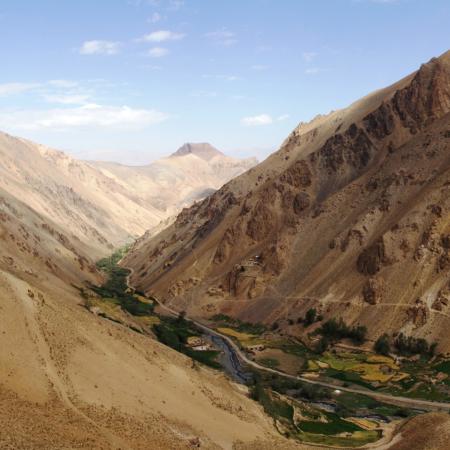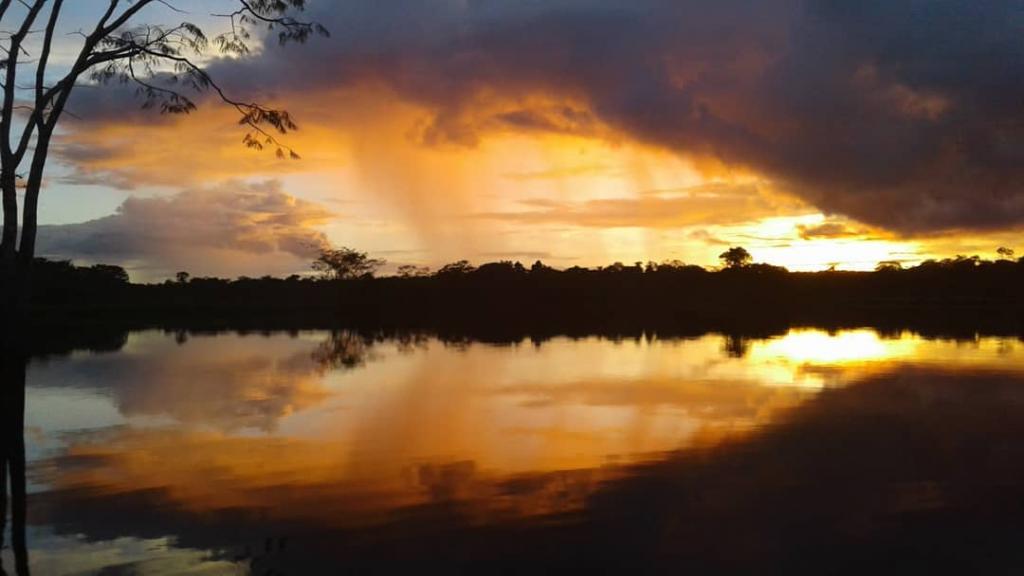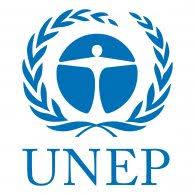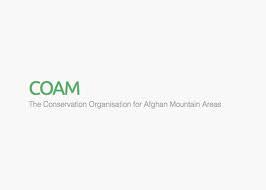
Aplicación de la reducción del riesgo de catástrofes basada en los ecosistemas (Eco-DRR) para la planificación de un desarrollo sostenible y resistente en las montañas de Koh-e Baba (Afganistán)

El proyecto pretendía reducir los riesgos de inundaciones y avalanchas y aumentar la resiliencia en una región montañosa de Afganistán promoviendo una mejor gestión de los ecosistemas mediante un enfoque paisajístico ascendente. En primer lugar se crearon planes de desarrollo ecológico y resiliente. En 7 pueblos se crearon viveros de árboles y se plantaron 235.380 esquejes de árboles en zonas seleccionadas propensas a riesgos para reforestar y rehabilitar laderas degradadas. También se reforzaron las capacidades de gestión sostenible y RRD a nivel local, provincial y nacional.
El proyecto adoptó un enfoque de Eco-RRD abordando los peligros (riesgo de inundaciones y avalanchas), la exposición y la vulnerabilidad a las catástrofes mediante la planificación del uso del suelo, medidas basadas en los ecosistemas y la preparación ante las catástrofes. Se trata de riesgos e impactos climáticos que están aumentando debido al cambio climático. Por tanto, las medidas basadas en los ecosistemas también permiten la adaptación. Aunque las actividades de gestión medioambiental sostenible son tanto EbA como Eco-DRR, el marco es Eco-DRR.
Contexto
Défis à relever
Las temperaturas extremas, las fuertes nevadas, las inundaciones, las avalanchas, las sequías y los corrimientos de tierras afectan a las vidas, los cultivos y el ganado, así como a las infraestructuras. La vulnerabilidad de las comunidades se ve exacerbada por la degradación del medio ambiente resultante de prácticas insostenibles del suelo, el aumento de la población y la mala planificación del uso de la tierra. Los principales retos del proyecto eran cómo integrar la Eco-DRR en la planificación del desarrollo local en Afganistán a diferentes niveles, la falta de terrenos públicos, lo que implicaba trabajar con propietarios privados.
Ubicación
Procesar
Resumen del proceso
El proyecto tiene cuatro componentes principales. Los cimientos de este trabajo residen en la integración de la Eco-RRD en la planificación del desarrollo local y nacional (bloque de construcción 1), lo que permite la planificación y ejecución de intervenciones de Eco-RRD sobre el terreno (bloque de construcción 2). El refuerzo de las capacidades locales y nacionales (building block 3), junto con el apoyo a la promoción provincial y nacional de la Eco-RRD (building block 4), permite sostener (en el futuro) la aplicación y reproducción de las medidas de Eco-RRD.
Bloques de construcción
Integrar la Eco-RRD en los procesos de planificación del desarrollo local y nacional
El proyecto diseñó una plantilla de Planificación de un Desarrollo Verde y Resiliente para su uso en las aldeas, y propuso un modelo para ampliar la planificación local con el fin de integrar los ecosistemas y las catástrofes a nivel de paisaje. Se llevaron a cabo evaluaciones de cartografía comunitaria, modelización SIG y teledetección para comprender mejor los cambios actuales e históricos en el riesgo de catástrofes, la salud de los ecosistemas y el uso del suelo, teniendo en cuenta el cambio climático. También se llevó a cabo una evaluación de la visión con la comunidad local para comprender mejor las necesidades de desarrollo de la comunidad.
En la plantilla, el proceso de planificación comienza con un examen exhaustivo de las condiciones físicas, sociales, culturales, religiosas y socioeconómicas existentes, así como con la identificación y localización de los principales peligros y zonas propensas a las catástrofes mediante consultas a la comunidad, visitas sobre el terreno y conocimientos de expertos locales. Una vez recopilada la información, se anima a las comunidades a debatir e identificar las prioridades de desarrollo local con respecto a los medios de subsistencia, el desarrollo del pueblo, la prevención de catástrofes y la mejora de la resiliencia de la comunidad. El plan final consiste en un mapa del desarrollo de la aldea, acompañado de un breve informe en el que se explican las conclusiones, los objetivos de desarrollo y las estrategias.
Factores facilitadores
El proyecto se dio cuenta de que sería más útil integrar el proceso de planificación del desarrollo del proyecto en los procesos de desarrollo local institucionalizados. Debido a algunas dificultades en este sentido (véanse las lecciones aprendidas), el proyecto aprovechó la ubicación de las siete aldeas objetivo, que se encontraban dentro de los límites del Área Protegida de Shah Foladi, e influyó en el diseño del plan de gestión del área protegida para ampliar las medidas basadas en el ecosistema dentro del paisaje más amplio.
Lección aprendida
Uno de los retos a los que se enfrentó el proyecto fue cómo apoyar mejor la integración de elementos de Eco-DRR en la planificación del desarrollo local en Afganistán. Aunque el proyecto empezó creando los planes de desarrollo ecológico y resiliente que se utilizarían en el marco del proyecto, decidió influir en el proceso de planificación del desarrollo existente en el marco del Programa Nacional de Solidaridad (PNS) del Gobierno. Sin embargo, el PNS está siendo revisado y se está elaborando un nuevo proceso a nivel nacional. Por lo tanto, el proyecto no pudo integrar la planificación del desarrollo verde y resiliente en el PNS. Sin embargo, ha puesto todo en marcha para que esto pueda ocurrir en el futuro.
Intervenciones sobre el terreno en las aldeas
En cada aldea se llevaron a cabo cuatro intervenciones principales:
- Creación de viveros comunitarios
- Plantación de árboles/reforestación
- Creación de centros comunitarios de resiliencia
- Capacitación local en actividades de Eco-DRR
El objetivo de estas actividades era restaurar la cubierta arbórea de las laderas y riberas de los pueblos para reducir el riesgo de inundaciones y, al mismo tiempo, proporcionar medios de subsistencia directos a los hogares y partes interesadas del proyecto. La creación de centros comunitarios y los procedimientos de preparación ante catástrofes pretendían reducir la exposición de los hogares proporcionándoles cobijo frente a condiciones invernales extremas. El proyecto también promovió la reproducción y ampliación de las actividades de Eco-DRR en Koh-e Baba, con el fin de mantener las intervenciones sobre el terreno más allá de los tres años de duración del proyecto.
Factores facilitadores
La situación de seguridad relativamente estable en la provincia de Bamyan y la colaboración de larga data entre el PNUMA, la Organización para la Conservación de las Zonas de Montaña Afganas (COAM) y las aldeas objetivo facilitaron la ejecución y el seguimiento de las actividades sobre el terreno.
Lección aprendida
Serían necesarias intervenciones sobre el terreno a una escala geográfica y temporal mucho mayor para aportar pruebas de una reducción real del riesgo de inundaciones, lo que quedaba fuera del alcance de este proyecto. Por lo tanto, la intención era más bien hacer demostraciones sobre el terreno de medidas bien conocidas basadas en ecosistemas que han demostrado su eficacia en otras investigaciones sobre el terreno y en la literatura científica para demostrar su potencial en las zonas de alta montaña de Afganistán.
La adopción, reproducción y ampliación del enfoque en el país se verán limitadas por una serie de retos. Entre ellos se encuentran la limitada capacidad de los gobiernos nacionales y locales, la falta de acceso a terrenos públicos para actividades comunitarias basadas en los ecosistemas y la necesidad de demostrar claramente los beneficios económicos de dichas actividades a fin de ofrecer incentivos locales para su reproducción. De hecho, al principio hubo resistencia a utilizar terrenos privados para los viveros, pero al final del proyecto hubo demanda para reproducir el establecimiento de viveros una vez vistos los beneficios.
Desarrollar la capacidad local y nacional para la Eco-DRR
El proyecto realizó una importante inversión en el desarrollo de capacidades para la aplicación de la Eco-DRR. En primer lugar, se llevaron a cabo actividades de concienciación dirigidas a diferentes públicos (comunidades de la zona del proyecto, gobierno, universidad y otros públicos locales y nacionales) a través de diversos medios como la radio, conferencias, talleres, hojas informativas y carteles, maquetas en 3D y vídeos.
En segundo lugar, se llevaron a cabo varios talleres sobre la aplicación de Eco-DRR a nivel local para instruir sobre la gestión de viveros, la alerta temprana y la preparación, la gestión de centros comunitarios de resiliencia, así como la formación de formadores. Las demostraciones sobre el terreno y las formaciones prácticas a nivel provincial y nacional sirvieron de base para reforzar la comprensión de los gobiernos provinciales y nacionales de la práctica de Eco-DRR con el fin de sostener la futura aplicación y reproducción de las medidas de Eco-DRR.
Por último, el proyecto implicó a las universidades afganas en conferencias y formaciones nacionales y provinciales sobre EcoDRR, en un esfuerzo por integrar los conceptos y conocimientos prácticos de EcoDRR en los programas universitarios.
Factores facilitadores
Tener una relación duradera y trabajar con organizaciones y actores locales es importante para una buena estrategia de comunicación y para permitir el desarrollo de capacidades. Además, la financiación adicional permitió un intercambio de aprendizaje para promover la Eco-RRD y la ACC en la región entre Afganistán, Tayikistán y Kirguistán.
Lección aprendida
El diálogo, la implicación de las partes interesadas y la colaboración con las organizaciones locales, la existencia de un proyecto piloto de demostración local y una fuerte inversión en el refuerzo de las capacidades son claves para la sostenibilidad.
Apoyo a la promoción provincial y nacional de la Eco-DRR
El objetivo de este componente era promover medidas basadas en los ecosistemas y la reducción del riesgo de catástrofes en Afganistán, donde esta labor sólo está en ciernes a nivel nacional. Por ello, el proyecto identificó puntos de entrada como el trabajo de adaptación al cambio climático y promovió el concepto general de reducción del riesgo de catástrofes en el país con medidas basadas en los ecosistemas como componente integral de la RRD.
Factores facilitadores
A través de sus intervenciones sobre el terreno y de múltiples cursos de formación y talleres locales, provinciales y nacionales, el proyecto suscitó un diálogo nacional sobre la eficacia de las medidas basadas en los ecosistemas para lograr un desarrollo sostenible y resistente a los desastres. El proyecto fue oportuno porque proporcionó una experiencia tangible de Eco-DRR en Afganistán, que contribuyó a informar el diálogo político nacional que condujo a la adopción del nuevo marco global sobre DRR.
Lección aprendida
El proyecto ha influido en la política y los programas nacionales promoviendo la Eco-RRD como componente integral de la RRD en las actividades humanitarias y de gestión de catástrofes, así como integrando la Eco-RRD en las actividades de adaptación al cambio climático. Sin embargo, la elevada rotación de personal en los puestos gubernamentales ha sido un factor limitante en los esfuerzos por crear capacidades y apoyar la promoción de políticas sobre Eco-RRD. Por ejemplo, los esfuerzos del PNUMA por promover la Eco-RRD en el Plan Provincial Quinquenal de Bamyan se vieron socavados por un cambio en el Gobernador Provincial y múltiples asignaciones temporales a este puesto, lo que provocó grandes retrasos en el desarrollo del Plan Provincial. Sin embargo, las formaciones y conferencias nacionales garantizan la creación de capacidades en el personal técnico gubernamental.
Impactos
La plantación de árboles en las laderas degradadas y en las riberas de los arroyos y ríos de los pueblos de la cuenca alta mitiga el riesgo de inundaciones y la consiguiente erosión. Además, la plantación de árboles frutales y las ventas de los viveros aumentaron la seguridad alimentaria y los ingresos de las aldeas.
Los planes de desarrollo ecológico y resiliente de las aldeas, que incluyen mapas detallados de riesgos y usos del suelo, permiten una planificación sensible a los ecosistemas y los riesgos que puede ampliarse al valle y al paisaje. Esto también permite alejar el desarrollo de las zonas propensas a los peligros e identificar las áreas de cambios en la salud de los ecosistemas, reduciendo la exposición y la vulnerabilidad a los peligros climáticos.
Por último, la comunidad está mejor preparada para las catástrofes, al tiempo que dispone de nuevas capacidades para reducir los riesgos de que éstas se produzcan y aumentar su resiliencia.
Beneficiarios
Siete aldeas de alta montaña, con un total de 1.317 habitantes, fueron los principales beneficiarios del proyecto. Sin embargo, el proyecto también beneficia a la provincia de Bayman y a Afganistán con el aumento de las capacidades de Eco-DRR, incluso dentro de la planificación nacional.
Objetivos de Desarrollo Sostenible
Historia

Las comunidades de siete aldeas de las montañas de Koh-e Baba, con la ayuda de una ONG local y del PNUMA financiada por la Comisión Europea, crearon planes de desarrollo ecológico y resistente para las aldeas que pueden conectarse con planes más amplios para el valle y el paisaje. Un componente integral de los planes fue el establecimiento de líneas de base y bases de datos para informar la planificación del uso de la tierra. Esto incluyó cartografía participativa comunitaria, estudios sobre el terreno, teledetección y modelización SIG, que sirvieron de base para planificar las intervenciones sobre el terreno.
Las intervenciones sobre el terreno incluyeron la creación de viveros de árboles (sauces, álamos y árboles frutales) y la plantación de árboles para la estabilización del suelo y la gestión de inundaciones en laderas y junto a arroyos, así como la creación de centros comunitarios de resiliencia (zonas de refugio seguras y espacios de formación) y equipos de preparación ante catástrofes en las aldeas, junto con el desarrollo de capacidades en todas estas áreas. Debido a la ausencia de terrenos públicos, hubo que seleccionar terrenos privados en cada aldea, por lo que los viveros se gestionan como empresas privadas con beneficios sociales. Esto también ayuda a mejorar la situación económica de los aldeanos, ya que los árboles frutales proporcionan mayores ingresos que el trigo o la patata.
A lo largo de dos años, se plantaron un total de 235.380 esquejes de árboles en zonas seleccionadas propensas a las inundaciones en los siete pueblos. Los habitantes de las comunidades también han expresado su aprecio por el valor estético de unas aldeas más verdes.
Por último, el proyecto también invirtió significativamente en el fortalecimiento de las capacidades locales y nacionales para la implementación de Eco-DRR a través de la sensibilización, la formación local y nacional y talleres, actividades de aprendizaje práctico en los sitios de campo, la integración de Eco-DRR en los programas universitarios y visitas de campo y viajes de estudio tanto en el país como en la región (intercambios de aprendizaje entre Afganistán, Tayikistán y Kirguistán).










